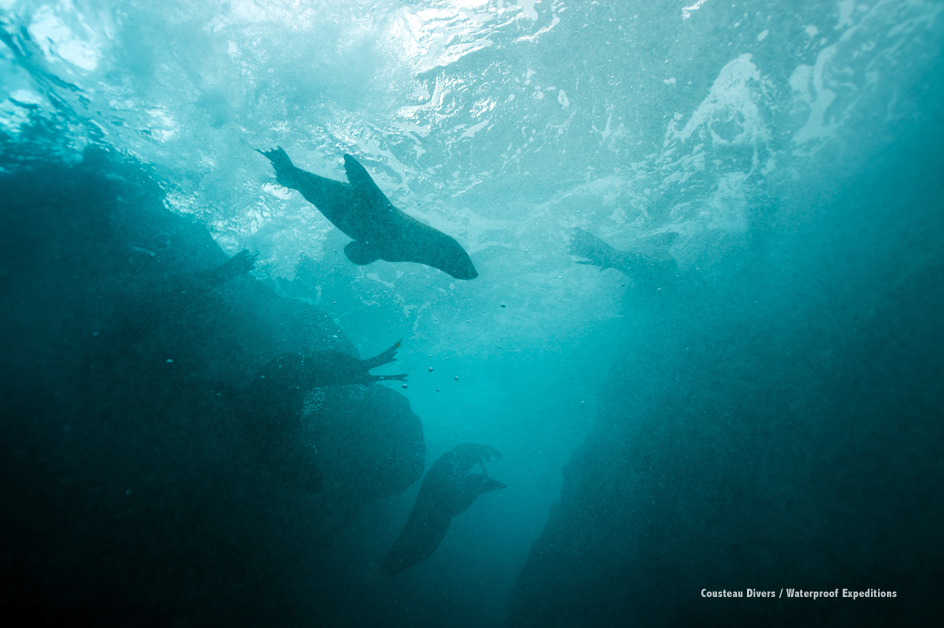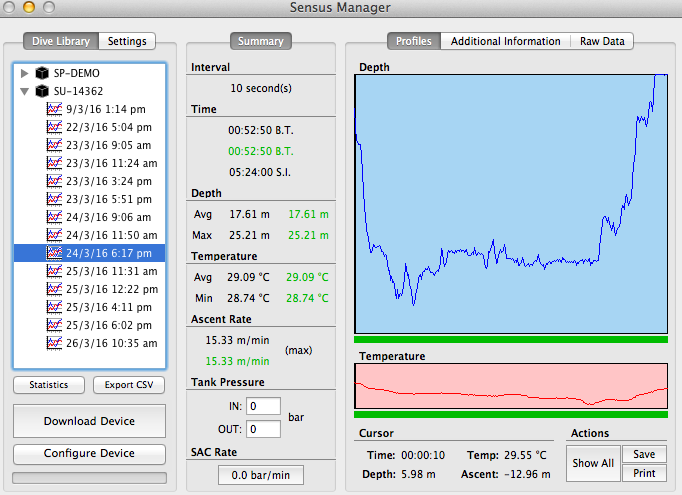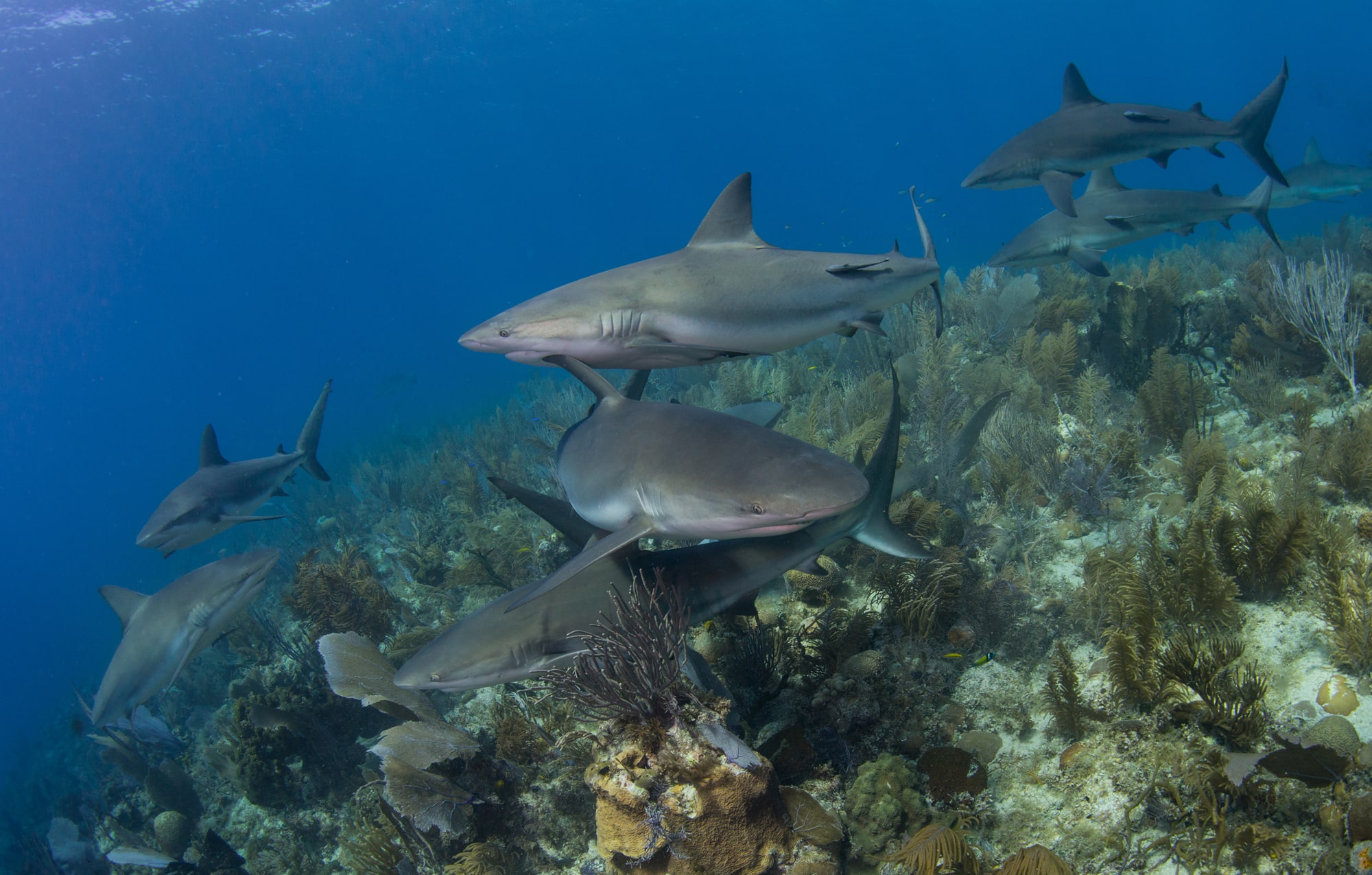Marine Life & Conservation
Pierre-Yves Cousteau’s Galapagos: Dive into the Wild
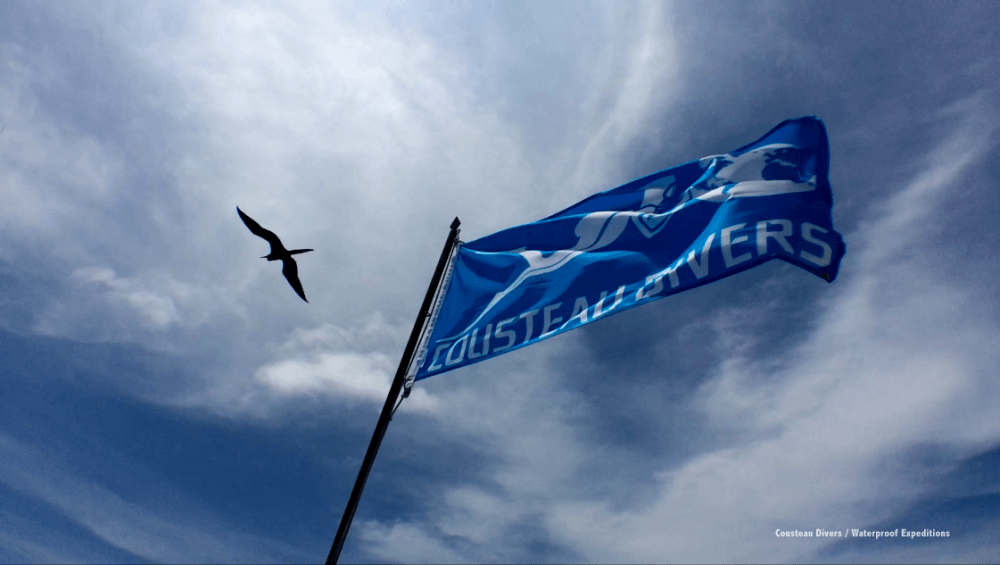
Read Part 1 of Pierre-Yves’ Galapagos blog here.
Ocean, how I missed you.
Wild and free, alive. Still full of promise, mystery and surprise.
A blood moon rises as the Galapagos Sky sets sail to explore the coastal waters of the Galapagos Islands. A variety of passengers, both in nationality and profession, further adds to the rich diversity of the trip. A New-Zealand farmer, a British administrative employee, a Dutch software designer and tester couple, an Indian real-estate developer, a Swiss family, Steve and I… The crew, with their dedication and skill, are the essential ingredient that makes the trip successful. I notice with pleasure that the Galapagos Sky has been “tagged” by my friend Wyland with a beautiful hammerhead mural.
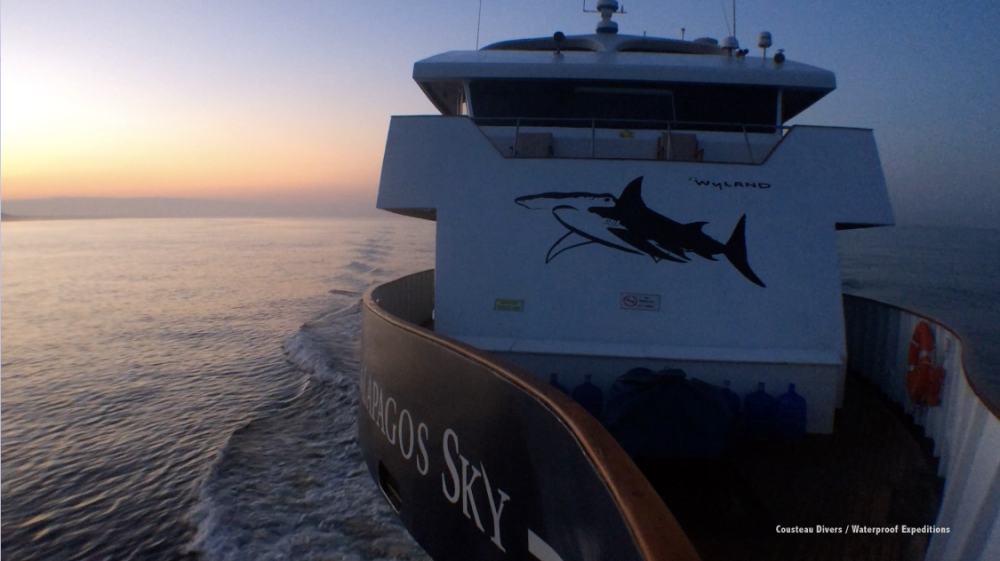
The diving conditions are exceptional. As in exception. Our guides have never had waters so warm, or currents so strong. In principle, neither is a good sign for observing marine life. As the water warms and the thermocline dives deeper, fish who prefer cooler waters stay out of sight. Strong currents mean we had to shoot images using one hand, the other one being busy holding on for dear life to a rock.
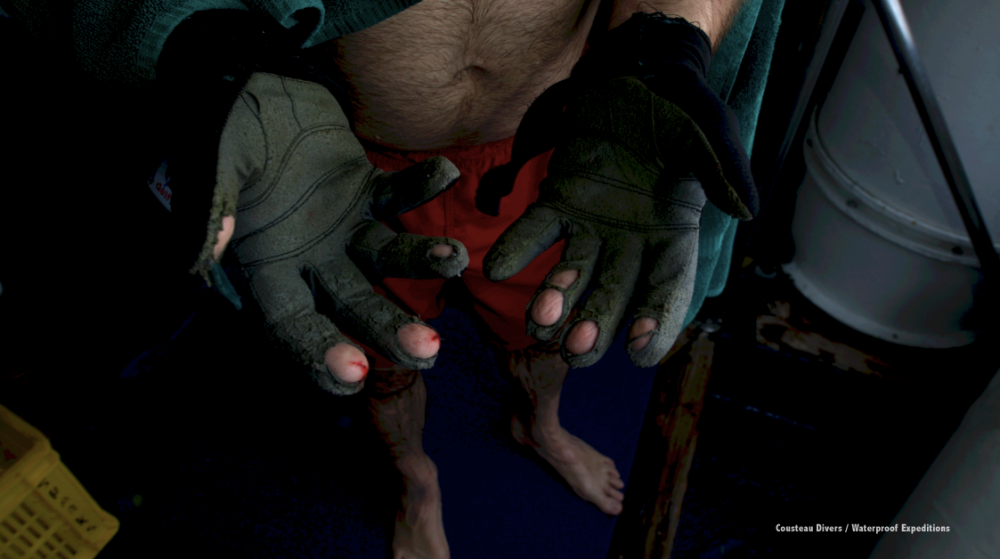
As we dive into another world, we become the invisible witnesses of millions of lives. We enter a universe we still know very little about. We fly among creatures without being able to hear their language. Territory, predation, cooperation, social behavior… We see only what is manifest, when countless unseen codes and gambits are played out in silence. Confused by our bubbly presence, the animals chose to ignore us. They are entirely absorbed in the necessities of every moment, and curiosity is a luxury that few can afford.
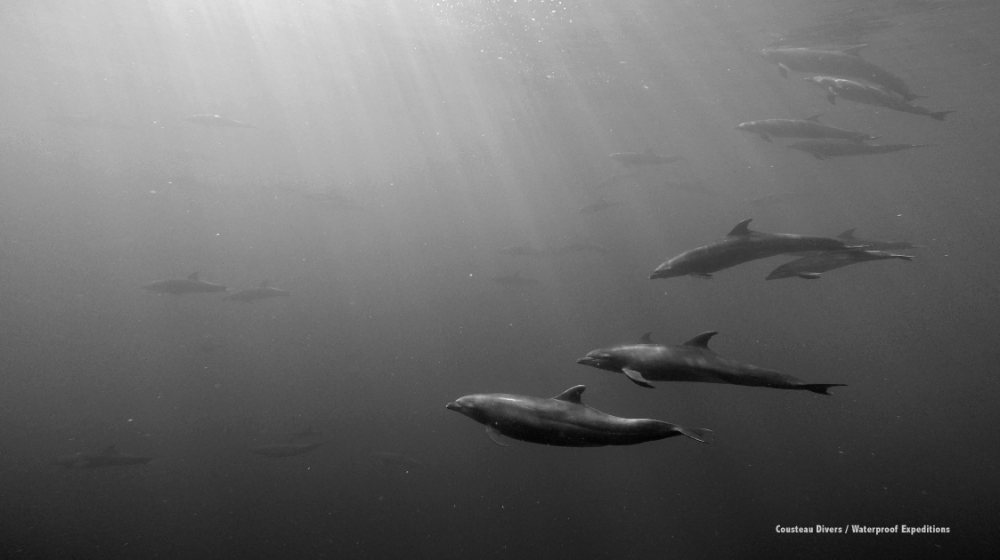

Coming up from one dive Steve and I find ourselves a bit far from the rest of the group, after filming sharks. The sun is setting and the dingy is quite far away, collecting other divers. I am suddenly reminded of our status as strangers in this wilderness. Dangling at the surface above hundreds of sharks I think: we’re perfect prey! I immediately put on my mask and peer down into the thick, dark waters. Just at that moment, a silky shark bolts up from the deep to examine us. After a rapid assessment, it dives back down into the dark blue. Steve and I take turns looking down and hailing the dingy until they pick us up.
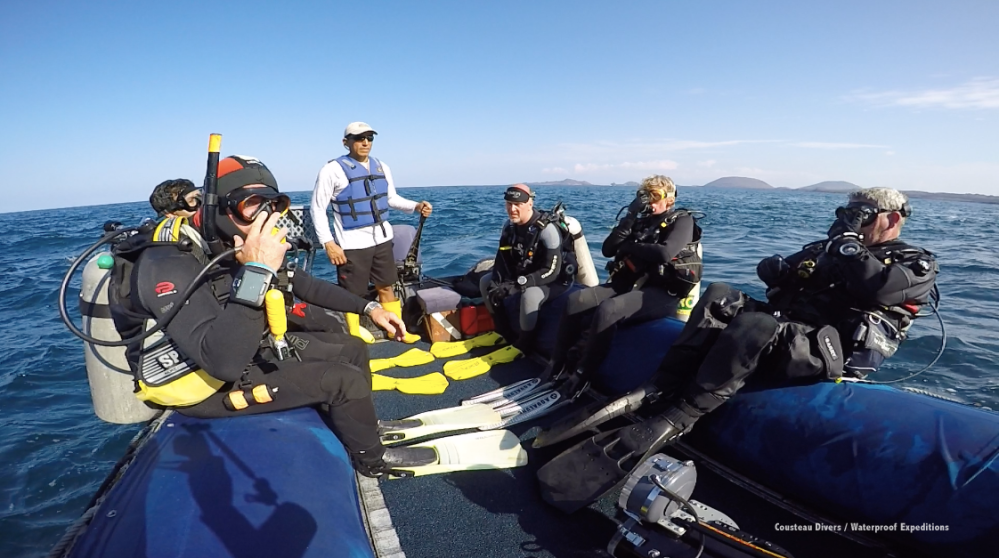
Returning to the Galapagos Sky I am struck by the presence of a dozen dead birds floating around us, their corpses apparently intact. Of the thousands of birds who constantly circle the Island of Darwin, I wonder if this is a natural “skimming” of the weak by competition or by disease. Our guide Jeff explains that these birds have starved or drowned because the thermocline is too deep, and the surface waters are too warm, meaning that the natural prey of these birds have dived deeper than they can reach. (Those familiar with my father’s movies will notice a certain physical resemblance between Jeff and Falco).
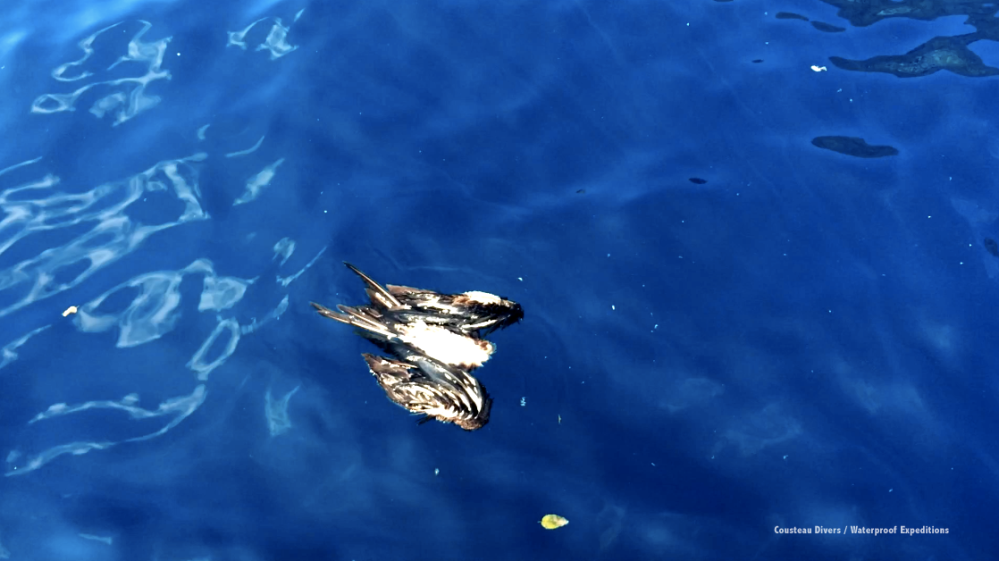
As part of Project Hermes, I’ve been diving with the Sensus Ultra, whose accuracy was tested in the Australian waters of Heron Island by the University of Queensland’s Global Change Institute team. Dive profiles were also recorded from our dive computers. The surface temperatures were a most comfortable and exceptionally warm, 30 degrees Celsius on most dive sites, with often no thermocline down to 30 meters depth. Speaking with Jeff and Max our dive guides of the Galapagos Sky, they’ve never had surface waters so warm.
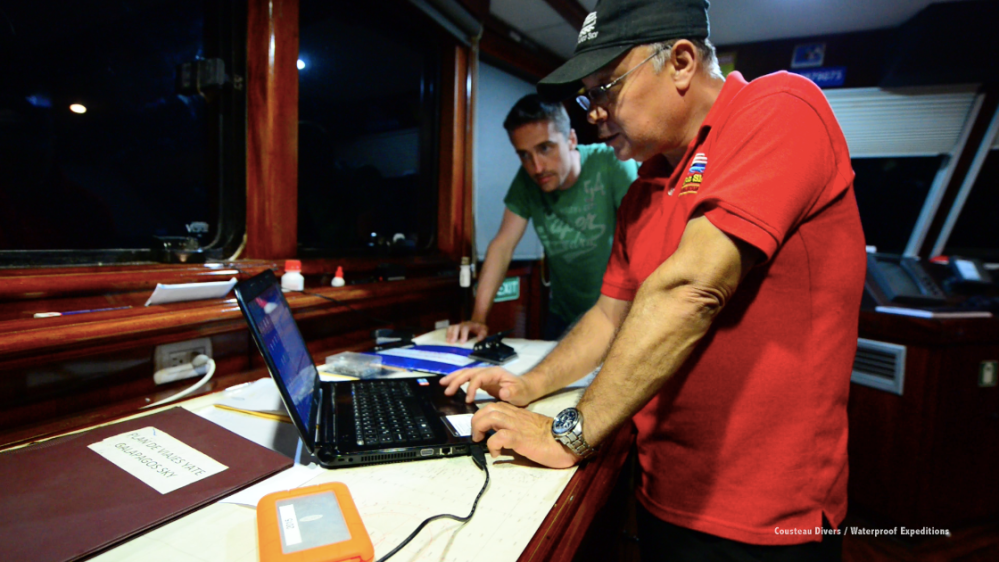
In 2016, you have to travel far in order to witness the miracles of nature in its untamed wilderness. As far as possible from the mega-cities and industrial sprawls. Far from the madness of men and women who constantly obsess about growth, greed and domination. How the underwater world has degraded since the days my father revealed it with his movies… Clearly the situation would be worse if he hadn’t, but also clearly his efforts were insufficient to prevent the decline entirely. Raising awareness can only go so far. For the next expedition to Tahiti with Waterproof Expeditions, in July 2017, I will spend more time searching the Cousteau archives in an attempt to produce before / after visuals as a testimony.
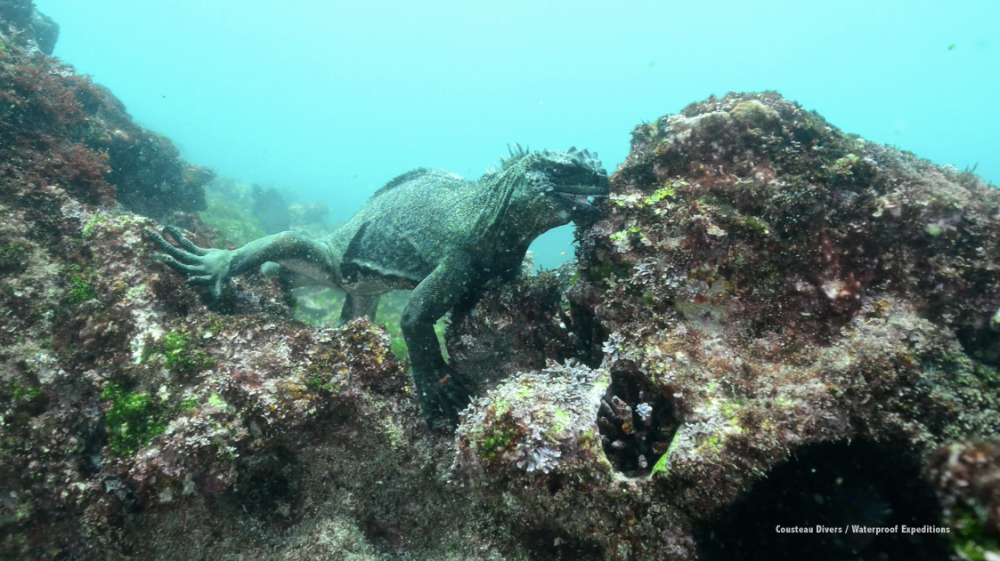
Climate change, habitat degradation, overfishing, plastic pollution… the list of our inconsiderate squandering of the ocean is long, and the Galapagos seem to have been successfully sheltered from these plagues so far. In fact I was delighted to note that I did not encounter a single piece of trash of any size during the week at sea: something I cannot say of any other place I have been in the world. Our guides explain that the National Park has very strict rules for disposal of trash in general and plastic in particular, with efficient collection mechanisms. However, I was saddened to learn that most of the plastic ends up in a landfill, here in the Galapagos. At least the collection is good. Recycling and disposal would be better. An absolute ban on single-use plastics, worldwide, but here in particular, seems necessary.
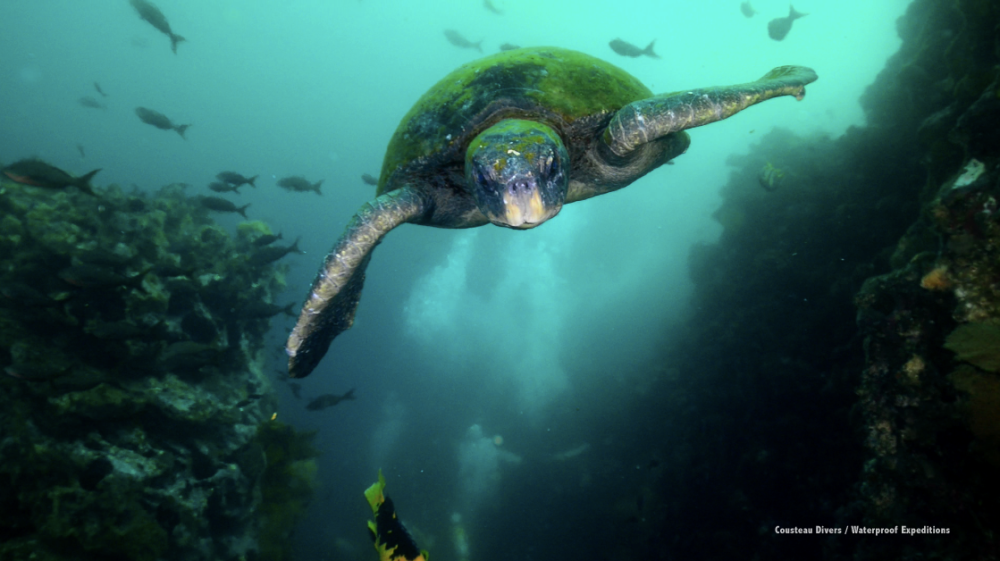
I’ve always wondered if there was a common cause for all this blind destruction. It seems to me that the reason is embedded in our minds: a lack of foresight and understanding of the real costs of our actions. What is referred to in business as “externalities”. I am convinced that sustainable development is possible, but it requires far more brainpower than is currently being used. More innovation, more research, and a shift in subsidies. So why don’t we turn our mind’s eye towards achieving it?
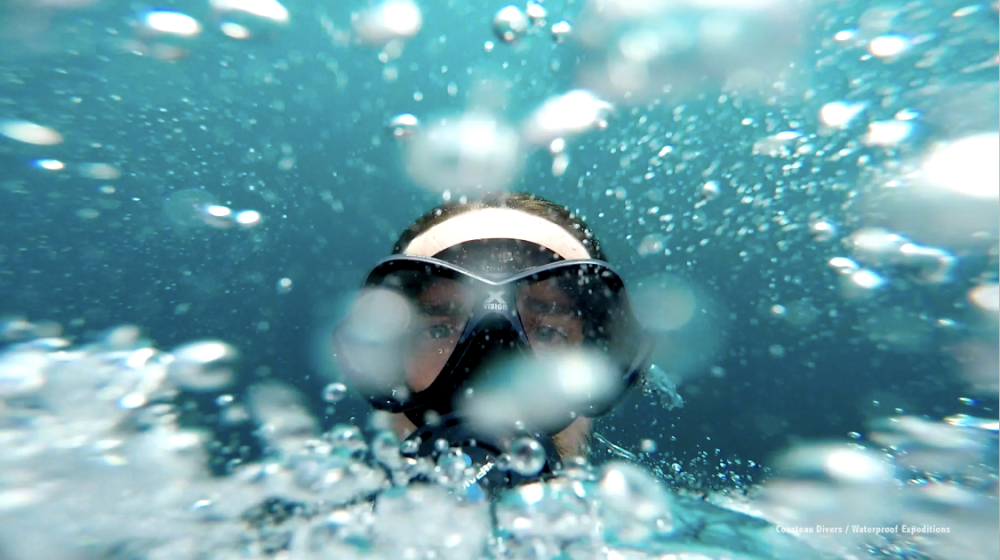
In a recent piece of work I did for IUCN, people were consulted across Europe to identify the main barriers to achieving sustainable development for the sea. Awareness and education came out on top as the most powerful ways to overcome those barriers. However, the social ecosystem itself appeared to be the main blockage in converting that awareness into action. The cultural values and cognitive frameworks that infuse our contemporary societies are diametrically opposite to the ones that would foster environmental stewardship. The obsessions with financial success and personal image prevent us from making the sustainable decision when given equivalent choices.
But how can you appeal to moral duty and self-transcendence when people are struggling to make ends meet, and constantly terrorized by the media into avid conformity? Social sciences are the missing piece of the puzzle for conservation and sustainable development to steer the Titanic of our civilization, and as the environment degrades, so do the options for living outside of the “rat race”. A vicious cycle. We must bring people into the equation of conserving natural resources by appealing to intrinsic values and calling for a transparent examination of the values that we are constantly being bombarded with, mostly by mainstream media and advertisement.
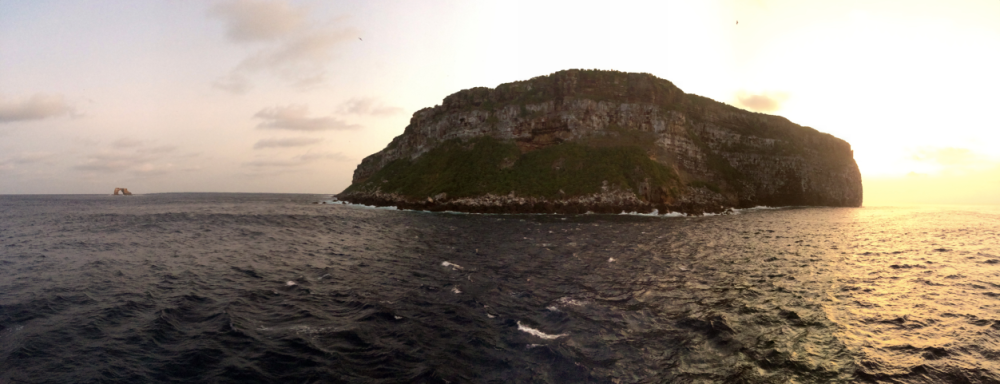
The information I had received prior to my previous blog post was true: the islands of Wolf and Darwin have been given no-take status by the president of Ecuador. This is fantastic news for marine life in these exceptional sites. But it seems the people, the few local fishermen who have always practiced small-scale traditional fishing in that area, were not considered in this process. They demand some kind of compensation, or right to fish in a reduced area between the two islands. In such a remote place, where daily enforcement is practically impossible, it would seem wise to at least consult, if not actively engage the fishermen in the establishment of the protected area. Once again, social sciences have been left aside, and the consequences for the success of the protection remain to be seen. I have interviewed the mayor of San Cristobal and the local fishermen during my time here and will give more detail on this in the next post.

All the images you see here are screenshots from the videos I have been filming. The Big Blue lights have proven to be amazing and incredibly durable. I have not yet managed to cycle through the battery entirely, even by leaving them turned on for two consecutive dives. Next week I will try to shoot some good stills, but I’ve been having some technical problems with my strobes. They fire optically and the housing I have for the camera has an in-built electrical system, which I had no time to replace before the trip. So I use an electrical to optical converter, and that has proven to be a nightmare… firing rather randomly. I plan on piecing together the videos into a mini-documentary for the web, featuring some of Steve’s exceptional high-speed footage. Stay tuned.
~ Pierre-Yves Cousteau
www.waterproof-expeditions.com
For more blogs from Pierre-Yves Cousteau, visit cousteaudivers.wordpress.com.
Marine Life & Conservation
Double Bubble for Basking Sharks

 The Shark Trust is excited to announce that, for two more days only, all donations, large or small, will be doubled in the Big Give Green Match Fund!
The Shark Trust is excited to announce that, for two more days only, all donations, large or small, will be doubled in the Big Give Green Match Fund!
Donate to Basking in Nature: Sighting Giants
The Shark Trust is hoping to raise £10k which will be doubled to £20k. This will go towards Basking in Nature: Sighting Giants. And they need YOUR help to reach they’re goal.
The Shark Trust’s citizen science project is to monitor and assess basking sharks through sightings; encouraging data collection, community engagement, and promoting nature accessibility. This initiative aims to enhance health and wellbeing by fostering a deeper connection with British Sharks.
Campaign Aims
- Increase citizen science reporting of Basking Sharks and other shark sightings to help inform shark and ray conservation.
- Provide educational talks about the diverse range of sharks and rays in British waters and accessible identification guides!
- Create engaging and fun information panels on how to ID the amazing sharks and rays we have on our doorstep! These can be used on coastal paths around the Southwest. With activities and information on how you can make a difference for sharks and rays!
- Promote mental wellbeing through increasing time in nature and discovering the wonders beneath the waves!
Donate, and double your impact. Click Here
Marine Life & Conservation
Leading UK-based shark conservation charity, the Shark Trust, is delighted to announce tour operator Diverse Travel as a Corporate Patron
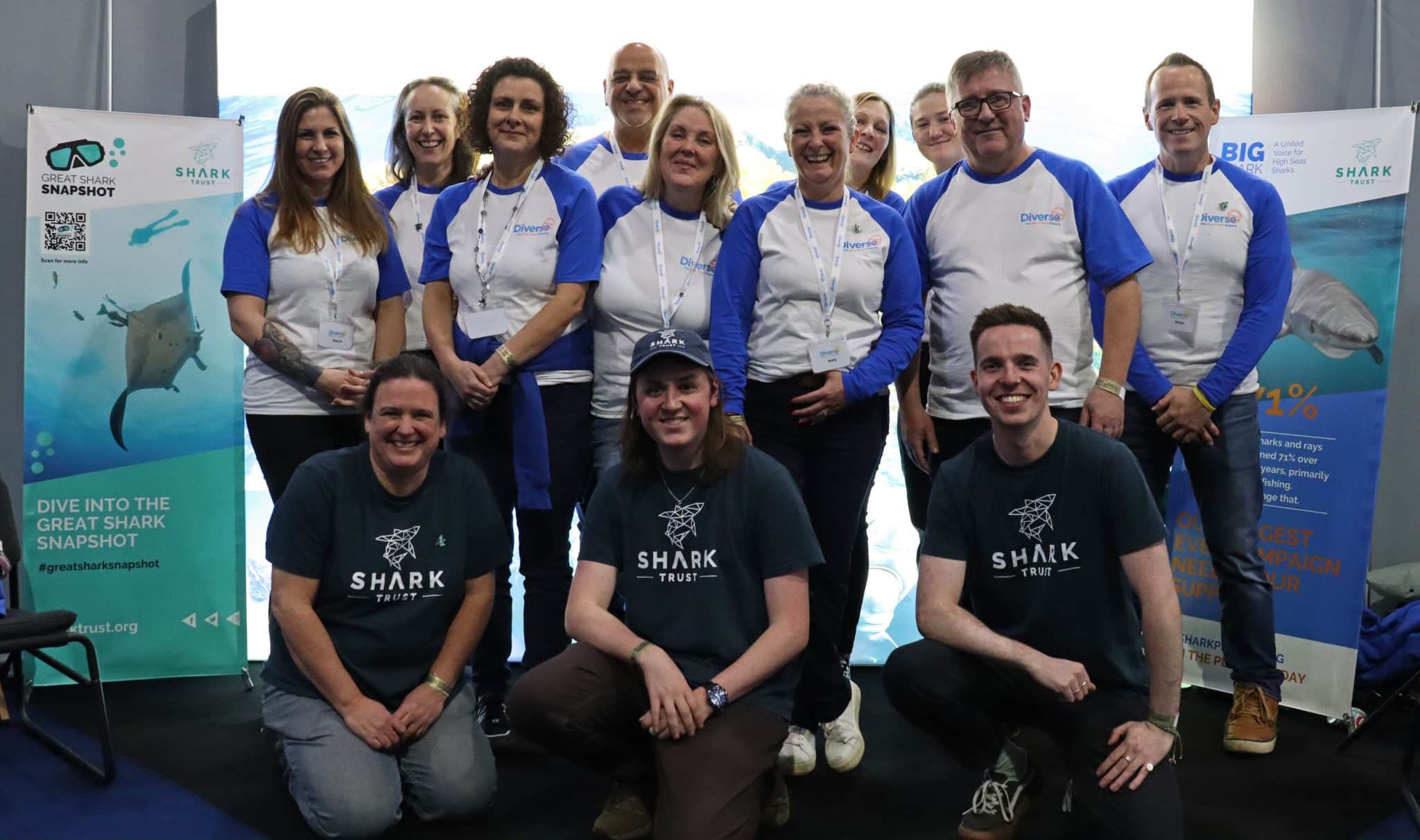
 Corporate Patrons provide a valuable boost to the work of The Shark Trust. The Trust team works globally to safeguard the future of sharks, and their close cousins, the skates and rays, engaging with a global network of scientists, policymakers, conservation professionals, businesses and supporters to further shark conservation.
Corporate Patrons provide a valuable boost to the work of The Shark Trust. The Trust team works globally to safeguard the future of sharks, and their close cousins, the skates and rays, engaging with a global network of scientists, policymakers, conservation professionals, businesses and supporters to further shark conservation.
Specialist tour operator Diverse Travel has operated since 2014 and is committed to offering its guests high quality, sustainable scuba diving holidays worldwide. Working together with the Shark Trust will enable both organisations to widen engagement and encourage divers and snorkellers to actively get involved in shark conservation.
“Sharks are truly at the heart of every diver and at Diverse Travel, we absolutely share that passion. There is nothing like seeing a shark in the wild – it’s a moment that stays with you forever!” says Holly Bredin, Sales & Marketing Manager, Diverse Travel.
“We’re delighted to celebrate our 10th year of business by becoming a Corporate Patron of the Shark Trust. This is an exciting partnership for Diverse and our guests. We will be donating on behalf of every person who books a holiday with us to contribute towards their vital shark conservation initiatives around the world. We will also be working together with the Trust to inspire divers, snorkellers and other travellers to take an active role – at home and abroad – in citizen science projects and other activities.”
Paul Cox, CEO of The Shark Trust, said:
“It’s an exciting partnership and we’re thrilled to be working with Diverse Travel to enable more divers and travellers to get involved with sharks and shark conservation. Sharks face considerable conservation challenges but, through collaboration and collective action, we can secure a brighter future for sharks and their ocean home. This new partnership takes us one more valuable step towards that goal.”
For more information about the Shark Trust visit their website here.
For more about Diverse Travel click here.
-

 News3 months ago
News3 months agoHone your underwater photography skills with Alphamarine Photography at Red Sea Diving Safari in March
-

 News3 months ago
News3 months agoCapturing Critters in Lembeh Underwater Photography Workshop 2024: Event Roundup
-

 Marine Life & Conservation Blogs2 months ago
Marine Life & Conservation Blogs2 months agoCreature Feature: Swell Sharks
-

 Blogs2 months ago
Blogs2 months agoMurex Resorts: Passport to Paradise!
-

 Blogs2 months ago
Blogs2 months agoDiver Discovering Whale Skeletons Beneath Ice Judged World’s Best Underwater Photograph
-

 Gear Reviews3 months ago
Gear Reviews3 months agoGear Review: Oceanic+ Dive Housing for iPhone
-

 Marine Life & Conservation2 months ago
Marine Life & Conservation2 months agoSave the Manatee Club launches brand new webcams at Silver Springs State Park, Florida
-

 News3 months ago
News3 months agoWorld’s Best Underwater Photographers Unveil Breathtaking Images at World Shootout 2023


